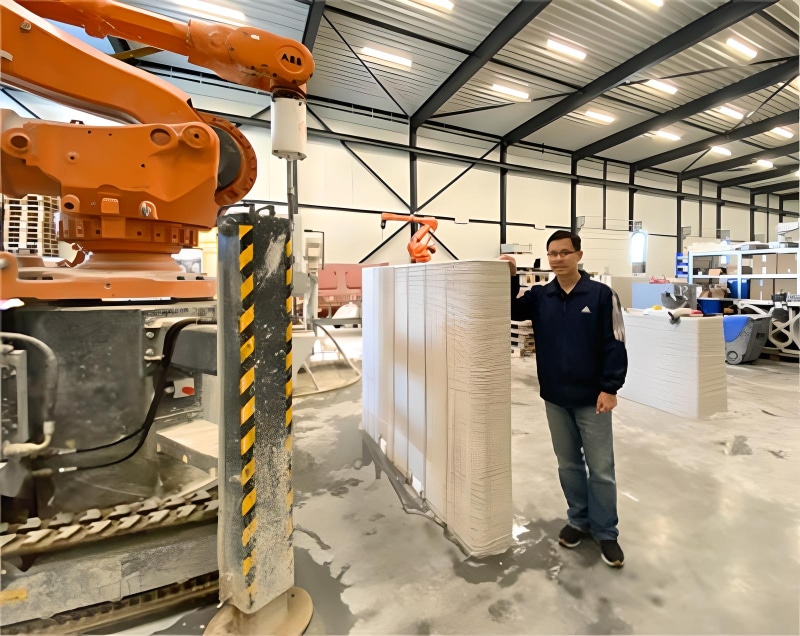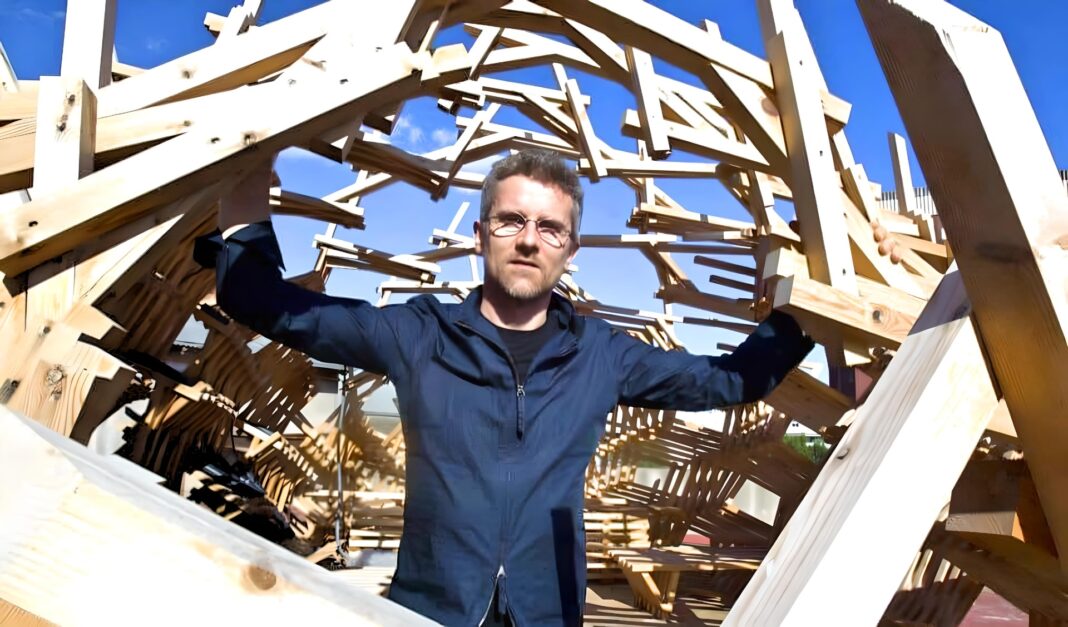Will 2024 be the year that AI fully disrupts the construction industry? That is the question posed by industry experts grappling with a future where “large behaviour models,” mass timber, prefab and 3D printing are the driving force behind the future of buildings.
Globally, more than US $10 trillion is spent yearly on construction-related activities, which is expected to balloon further as governments and big banks turn to building to stimulate the economy. Much of this enormous spending is channelled into rapidly moving technological advancements, making construction more efficient and cost-effective.
It comes as Wood Central reported on Tuesday that the Canadian government is using modular, panelisation, mass timber, and 3D-printed designs to deliver housing on an industrial scale. At the same time, Gensler, the world’s largest architecture firm, is already using AI to pinpoint thousands of buildings for retrofit.
According to Kelly Benedict, head of innovation and transformation for US-based Gilbane Building Co, OpenAI, which last year released ChatGPT, has opened the floodgates for construction opportunities.
“It’s the only thing people want to talk about on panels,” according to Ms Benedict, who spoke overnight to US-based Construction Drive. “How are construction companies starting to use generative AI?”
AI, or artificial intelligence, can be a power for good, freeing up workers from the daily drudgery of mundane tasks – with experts warning that it provides the only hope to deliver ambitious housing targets amid a global labour shortage.
“We can lean on AI for essential goals like upskilling, workforce development, knowledge transfer, supply chain optimisation, enhanced safety design and planning and much more,” according to Matt Abeles, the vice president of construction technology and innovation for the US-based Associated Builders and Contractors.
But the surge in interest has also created problems, with experts pleading for caution. “In our industry, we need to be cognizant of life, safety and the risks of our jobs,” said Henning Roedel, the robotics lead for Redwood City at California-based DPR Construction.
“If that large language model responds with the wrong answer, and we believe it and act on it, that’s on us. We must be cautious about that, ensure the information is correct, and do our due diligence.”
The emerging role of robotics
Robotics is a topic that goes hand in hand with AI and is front and centre in the booming “contech space”.
Innovators are deploying robots to develop 3D and even 4D prefabricated construction materials, with the latest research suggesting that automation could lead to a 50% reduction in material consumption, 63% reduction in emissions and 75% in time-saving.
Their applications are varied. Some lay bricks – others drive piles as part of industrial solar installations. A humanoid robot can move around a job site, tossing bags with impressive feats of skill and athleticism. Finally, a Detroit-based architect has designed a housing solution that can construct a detached house in just 7-days, with Citizen Robotics now looking to supply hundreds of affordable homes across middle America.
But this is just the beginning.
Mr Roedel pointed to a breakthrough from the Toyota Research Institute, where researchers use a generative AI technique known as “diffusion policy” to teach robots how to perform dexterous tasks. In the same vein as large language models, like ChatGPT, the goal is to create Large Behavior Models.
“Combining AI with the hardware, I think it could be the big thing in 2024 that will revolutionise our industry,” Mr Roedel said.
An important consideration, however, is the unpredictability of both the tech and what happens on job sites. Robotic experts are pushing for caution and are calculating the impacts the machines will have on business — including whether robots will eventually take jobs from human workers.
Will 2024 be the year that mass timber and prefabrication become mainstream?
In many ways, low-carbon materials like timber, bamboo and biomass are the new black, with global governments, the FAO and even the UN’s Intergenerational Panel on Climate Change embracing bio-based construction materials as the only viable pathway to reduce emissions.
Nonetheless, apart from small-scale residential projects – progress in replacing traditional construction materials like steel, concrete and aluminium with mass timber has been slow and subject to a series of misstarts and stumbles.
However, according to experts, the pendulum is starting to move with an increasing number of developers and municipalities turning to mass timber – including the city of Boston, which is now using “lightweight” cross-laminated timber systems to build social housing over public libraries.
With the push to embrace mass timber systems, engineers are now turning to machine learning to maximise timber use in projects, upcycling and reusing timbers in new projects. Known as “AI Timber,” founders Carlo Ratti and Mykola Murashko claim that AI is redefining the manufactured cross-laminated timber (CLT) in future projects.
In addition, builders are also honing in on efficient processes such as prefabrication while keeping a healthy dose of scepticism over the approach. “You take some choice out of the equation,” said Michael Zeppieri, Vice President of emerging technology at Skanska USA Building.
He said it’s possible to “get to volume and economy of scale and meet a market need,” however, “you’re taking away choice.” As a result, outcomes can be “cookie-cutter.”
As a result, builders should pick and choose where to apply this process.
“I think our approach is going to be more strategic,” said Danielle O’Connell, Skanska USA Building’s senior director of emerging technology.
“We don’t just have to do prefab because an owner wants it, but being able to identify why that might not work or why it might work well.”
Are 3D 3D-printed construction systems the future?
One technology still under the radar is industrial 3D printing, with regulators looking to develop “3D Printing Design Codes” for future use.
“Thirty years ago, people were printing small things in labs,” said RMIT University Civil and Infrastructure Engineering Advanced Manufacturing Precinct senior lecturer Dr Phuong Jonathan Tran.
“3D printing has already made it to space and into a range of other industries,” including construction, according to Dr Tran, a part of an Australian committee for 3D printing design codes pushing to align with American and European standards.
When it comes to construction, the manufacturing method may still be experimental, and the domain of startups and academics looking to change the construction process, but it is expected to make a massive impact in the coming decade.

It includes Melbourne-based company Fortex, which in 2022 partnered with COBOD International to bring the world-leading BOD2 3D construction printing technology to Australian shores.
According to Fortex CEO David Lederer, 3D printing delivers faster, greener, more durable buildings with greater design freedom than conventional building methods.
He said 3D printing can “carve months off traditional building timeframes,” streamlining labour and alleviating supply issues at a time when skills and material shortages plague the conventional housing construction industry.
“This world-leading technology is the disruptor conventional building needs. It is not only the future of construction but the now.”






